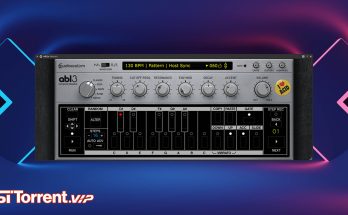CD.MP3 Acoustic Pockets (WAV)
In the realm of digital music, the quest for optimal sound quality has been ongoing since the advent of audio recording technology. This journey has led to the development of various audio formats, each with its own characteristics and nuances. Among these formats, CD, MP3, and WAV stand out as popular choices, each offering a unique approach to storing and reproducing audio data. In this article, we delve into the concept of acoustic pockets within these formats, exploring how they influence the listening experience and shape our perception of sound.

Understanding CD Audio Format
Compact Discs, or CDs, revolutionized the way we consume music upon their introduction in the 1980s. Utilizing a digital audio format known as PCM (Pulse Code Modulation), CDs offer high-fidelity sound reproduction with a standard sampling rate of 44.1 kHz and a bit depth of 16 bits. This uncompressed format ensures minimal loss of audio data, resulting in pristine sound quality. However, despite its fidelity, CD audio has its limitations, particularly in terms of storage capacity and portability.
Analyzing MP3 Compression
The rise of digital audio players and online music distribution platforms paved the way for the MP3 format, which quickly became synonymous with digital music in the late 20th century. MP3 employs lossy compression algorithms to reduce file size while maintaining perceptual audio quality. By selectively discarding audio data that is deemed less essential to human hearing, MP3 achieves significant file size reduction, making it ideal for streaming and storing vast music libraries. However, this compression comes at a cost, as it can introduce artifacts and diminish the overall acoustic fidelity of the audio.
Delving into WAV Uncompressed Format
In contrast to the compression utilized by MP3, the WAV format preserves audio data in its entirety, offering a true representation of the original sound. WAV files are uncompressed, meaning they retain all the nuances of the recorded audio without any loss of quality. This format is favored by professionals in audio production and mastering due to its fidelity and flexibility. However, the trade-off for uncompressed audio is larger file sizes, which can pose challenges in terms of storage and bandwidth.
Exploring Acoustic Pockets
Acoustic pockets refer to the subtle nuances and details present within the audio that contribute to the overall listening experience. These pockets can be thought of as moments of clarity and depth within the soundstage, where individual instruments and elements are distinctly perceivable. The characteristics of acoustic pockets vary depending on the audio format used, with CD, MP3, and WAV each offering their own interpretation of the music.
In CD audio, the uncompressed nature of the format allows for rich and detailed sound reproduction, with acoustic pockets offering a sense of depth and immersion. However, the limited dynamic range of CDs may constrain the extent of these pockets in certain recordings.
MP3 compression, on the other hand, introduces a degree of compromise in acoustic quality, resulting in smaller and less defined acoustic pockets. While the overall sound may remain enjoyable, subtle nuances and finer details can be lost in the compression process, affecting the depth and clarity of the audio.
WAV format, with its uncompressed nature, preserves the integrity of the original recording, allowing for expansive and well-defined acoustic pockets. This format excels in capturing the full range of frequencies and dynamics present in the music, providing a truly immersive listening experience.
Real-world Applications
The significance of acoustic pockets extends beyond mere audio quality, influencing how we perceive and connect with music in various contexts. Whether in the controlled environment of a recording studio or the lively atmosphere of a live performance, acoustic pockets play a crucial role in shaping our auditory experience. Understanding the characteristics of different audio formats and their impact on acoustic pockets empowers listeners and professionals alike to make informed choices when it comes to music production, distribution, and consumption.
Future Trends and Technologies
As technology continues to evolve, so too will the landscape of digital audio formats and the concept of acoustic pockets. Emerging formats and compression algorithms promise to push the boundaries of audio quality, offering new possibilities for immersive sound experiences. Whether through advancements in lossless compression techniques or the adoption of high-resolution audio formats, the future holds exciting prospects for audiophiles and music enthusiasts alike.
Conclusion
In the ever-changing world of digital music, the concept of acoustic pockets serves as a guiding principle for achieving optimal sound quality and fidelity. Whether through the uncompressed clarity of WAV, the convenience of MP3, or the legacy of CD audio, each format offers its own interpretation of the musical experience. By understanding the nuances of these formats and embracing the concept of acoustic pockets, we can embark on a journey of sonic exploration and appreciation, enriching our connection with the music that moves us.






